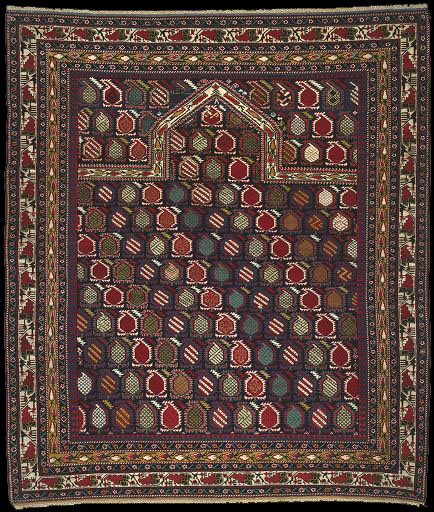|
Prayer Carpet, 1890-1910
Rug
Caucasian, 19th-20th centuries
Wool
133 x 113 cm (52 3/8 x 44 1/2 in.)
Creation Place: South Caucasus, Caucasus
Harvard Art Museums/Arthur M. Sackler Museum, Gift of Elizabeth Gowing,
Harborne W. Stuart, Peggy Coolidge, and the Estate of W.I. Stuart in memory
of Mr. and Mrs. Willoughby H. Stuart, Jr., 1977.166
Department of Islamic & Later Indian Art
A prayer rug from the area of Marasa, whose name was corrupted to the term
‘Marasali’ used today for these rugs. the Marasali rugs could trace their
design heritage back to slit-weave tapestry kilims, and the rugs have to be
seen in that context. There are both finer and coarser rugs using the
Marasali design. This particular piece had an in-woven date of 1908. Despite
having a relatively late date of creation, the piece had only natural dyes.
It was also stiffer and more regular than the greatest of the black
Marasalis, but there were a number of examples of weaver inventiveness. The
piece was very finely woven, and in extremely good condition, suggesting
that it was woven for export, and perhaps even as a prestige production
piece. The collector who donated the piece to the Sackler had acquired it
prior to 1920. The piece had some design features reflecting its late date,
such as an additional main border.
 |

